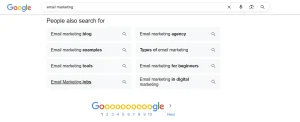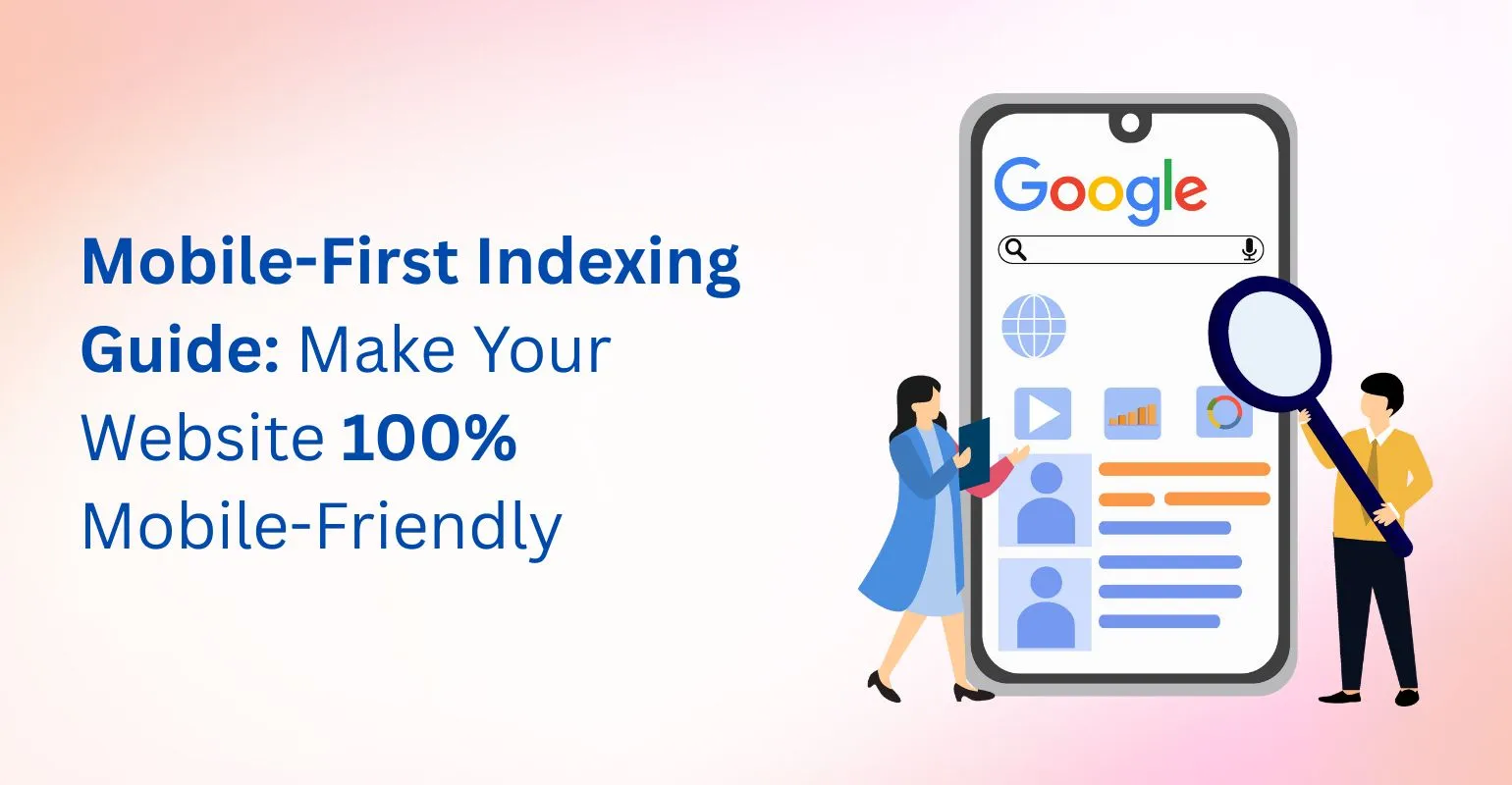blog
LSI Keywords: The Underrated SEO Hack You’re Not Using (Yet)

LSI Keywords Are Not Optional Anymore
Let me ask you something:
Ever published an awesome blog post…
…only to see it buried on page 3 of Google?
It happens more often than you think. And one silent killer behind poor rankings?
Lack of topical relevance.
That’s where LSI keywords come in.
They help search engines understand what your content is really about.
More importantly, they help your page rank for more variations, user intents, and long-tail terms.
In this post, you’ll learn:
- What LSI keywords really are (and aren’t)
- Why Google uses them (yes, even in 2025)
- How to find them (fast)
- And how to sprinkle them into your content like a pro
Let’s dive right in.
What Are LSI Keywords (And What They’re NOT)
You’ve probably seen the term “LSI keywords” thrown around in SEO forums and blogs.
But here’s the truth:
Google doesn’t use something called “Latent Semantic Indexing” anymore.
However, the idea behind LSI keywords? Still extremely relevant.
Let me explain.
What Are LSI Keywords?
LSI stands for Latent Semantic Indexing, a fancy term for keywords that are topically related to your main keyword.
For example:
Let’s say your main keyword is “on-page SEO.”
Some LSI keywords might be:
- meta tags
- keyword density
- internal linking
- SEO audit
- content optimization
They’re not synonyms. But they’re concepts search engines expect to see in high-quality content about “on-page SEO.”
What They Are NOT
There’s a lot of confusion out there, so let’s clear it up:
-
They’re NOT synonyms.
“Car” and “automobile” are synonyms. But “engine,” “road,” or “seatbelt” are LSI-style keywords.
-
They’re NOT keyword stuffing.
You don’t force these into your copy. You organically include them to build topical authority.
-
They’re NOT outdated.
Google may not literally use “LSI,” but its algorithms (like BERT and RankBrain) depend on understanding context and these keywords help you provide it.
Real-World Analogy
Think of your content as a conversation.
If someone’s talking about “Apple,” you need related words like “iPhone,” “MacBook,” or “Steve Jobs” to know they mean the company and not the fruit.
That’s what semantic keywords do: clarify and strengthen the topic relevance of your page.
Why LSI Keywords Matter for SEO (in 2025 and Beyond)
It’s 2025. SEO has changed.
But one thing hasn’t:
Google still rewards content that answers user intent better than anyone else.
And that’s exactly where semantic keywords shine.
1. They Boost Topical Relevance
Google is smarter than ever. It doesn’t just look at your primary keyword it scans your entire page for semantic relevance.
If your post is about “affiliate marketing,” and you mention:
- commission rates
- product reviews
- conversion tracking
- passive income
- referral links
Google knows you’re covering the topic in depth. And that means better rankings.
2. They Help You Rank for More Long-Tail Terms
Here’s a secret:
Most SEO traffic doesn’t come from your main keyword, it comes from hundreds of long-tail variations.
When you naturally include these keywords, you tap into this hidden traffic.
For example:
A blog on “intermittent fasting” with LSI terms like:
- 16:8 method
- autophagy
- insulin sensitivity
- fasted cardio
…can rank for all of these without targeting them individually.
3. They Reduce Bounce Rate (and Increase Dwell Time)
Here’s what happens when your content matches the user’s intent:
- People stick around
- They scroll deeper
- They explore more content
- They signal Google: “Hey, this page delivers value!”
And guess what?
That behavior can indirectly boost rankings through better engagement metrics.
4. They Future-Proof Your SEO
Google’s algorithm updates (like Helpful Content, BERT, and MUM) all have one goal:
Understand context like a human.
By using keywords, you’re creating content that’s aligned with how Google thinks.
Not just now but in the future too.
Examples of LSI Keywords in Action
Let’s make this real.
Say your seed keyword is:
Yoga for Beginners
Now, here are semantic keywords Google expects in high-quality content on that topic:
- Yoga poses
- Flexibility
- Breathing techniques
- Yoga mat
- Mindfulness
- Injury prevention
- Relaxation routine
- Meditation
- Core strength
Before: Boring, Keyword-Stuffed Paragraph
Yoga for beginners is important for beginners. Beginners in yoga should learn yoga for beginners slowly. Yoga for beginners is good for health.
Yikes. That’s painful to read and Google’s smart enough to skip it.
After: Natural, LSI-Rich Version
Starting yoga as a beginner? Focus on simple poses that improve flexibility and core strength without risking injury. Grab a comfortable yoga mat, practice deep breathing, and build mindfulness into your routine. This beginner-friendly approach not only eases you into movement but also promotes mental clarity and relaxation.
See the difference?
It reads like it was written for humans and not bots.
But it also ticks all the semantic boxes for Google’s algorithm.
How to Find LSI Keywords (Free & Fast Methods)
Finding these keywords isn’t rocket science.
But most people overcomplicate it.
You don’t need a dozen expensive tools.
Here are six simple (and free) ways to uncover high-impact LSI keywords today.
1. Google’s “Searches Related To” Section
Go to Google.
Type in your main keyword.
Now scroll to the bottom of the search results.
You’ll see this section:
“Searches related to [your keyword]”

Image Source: Captured from Google SERP for “email marketing”
2. Google Autocomplete
Start typing your keyword in the Google search bar.
You’ll see instant suggestions.
That’s Google’s AI pulling in semantic matches and variations people are already searching for.
Pro tip: Use modifiers like:
- “how to…”
- “best…”
- “vs…”
- “tools…”
- “examples…”
It’ll surface some powerful long-tail LSI terms.

Image Source: Captured from Google search bar autocomplete for “content marketing”
3. Use LSIGraph (Free Tool)
Head over to lsigraph.com
Drop in your main keyword.
You’ll get a list of semantically related terms pulled from Google’s algorithmic data.
It’s super beginner-friendly and perfect if you want a quick list without doing heavy research.
Analyze Top-Ranking Pages
Want LSI keywords that already work?
Spy on the top 3–5 pages ranking for your keyword.
Use this checklist:
- What subheadings do they use?
- What keywords are bolded or repeated?
- What terms show up in image alt tags or internal links?
These give you a direct clue into the semantic terms Google is rewarding right now.
5. AnswerThePublic
This tool turns a single keyword into dozens of:
- Questions
- Comparisons
- Related phrases
Put in something like “email marketing” and you’ll get:
- What is email automation?
- How to write a welcome sequence
- Email marketing vs social media
These are rich, LSI-heavy terms aligned with actual user queries.
6. Use Google NLP API Demo (Advanced)
If you want next-level LSI insights, try Google’s own Natural Language Tool
Paste in your content (or your competitor’s).
It shows you what Google thinks the page is about by extracting entities, categories, and semantic terms.
It’s a sneak peek into how their algorithm reads your page.
How to Use LSI Keywords in Your Content (Without Overdoing It)
Here’s the deal:
They are not for stuffing.
They’re for enhancing relevance.
Google’s algorithm uses them to understand context, relationships, and search intent.
Use them smartly, and you’ll:
- Improve topical depth
- Avoid keyword cannibalization
- Rank for dozens of related queries
- Reduce bounce rate by matching user intent
Here’s how to do it the right way:
1. Use LSI Keywords in Subheadings (H2/H3)
Search engines love clear structure.
By placing LSI terms in your subheads:
- You tell Google the scope of your content
- You improve scannability for readers
For example:
Main Keyword: SEO audit
LSI Subheads:
- “Technical SEO Checklist”
- “On-Page SEO Issues to Look For”
- “How to Fix Crawl Errors”
Pro tip: Don’t force it. Let it flow naturally with your structure.
2. Sprinkle Them in the First 150 Words
Google gives extra weight to what appears early on the page.
Weave 1–2 LSI keywords in your:
- Intro paragraph
- Hook statement
- Meta description (if used on-page)
Example:
If your keyword is “email marketing,” include LSI terms like “automated emails” or “subscriber engagement” right upfront.
3. Use LSI Terms in Alt Text and Image File Names
Images aren’t just for looks they’re SEO goldmines.
- Use descriptive file names: seo-keyword-research-tool.png
- Write alt text like: “Dashboard showing SEO keyword volume and competition data”
This gives your page extra semantic relevance without bloating the visible text.
4. Naturally Embed in Paragraphs (Anchor-Text Friendly)
Once you have your LSI list, scan your paragraphs and ask:
“Can I swap in an LSI keyword without changing the meaning?”
You’ll be surprised how often it fits.
Plus, these are perfect for internal linking anchors.
Example:
Instead of saying:
Learn more in our post.
Say:
Learn more in our on-page SEO checklist.
5. Leverage LSI in FAQs, Comparison Tables, and Lists
These formats are prime for semantic expansion.
Let’s say your keyword is “digital marketing tools.”
Your list could include:
- Social media scheduling tools
- Email automation platforms
- Analytics dashboards
- CRM integrations
Each term helps cover related search intent, boosting your visibility in rich snippets and People Also Ask boxes.
6. Don’t Obsess Over Keyword Density
This is important.
There’s no magic % for LSI usage.
Use common sense.
If your content covers a topic deeply and clearly, LSI keywords will naturally appear.
Aim for:
- Variety, not repetition
- Relevance over exact matches
- Natural tone over robotic keyword stuffing.
LSI Keywords vs Synonyms vs Long-Tail Keywords: What’s the Difference (and Why It Matters)
Confused between LSI keywords, synonyms, and long-tail keywords?
You’re not alone. Most SEOs throw these terms around like they’re interchangeable but they’re very different.
Let’s break it down.
1. Synonyms = Words with the Same Meaning
Simple.
If your keyword is “car”, a synonym would be:
- automobile
- vehicle
- ride
Synonyms are great for semantic variety, they help avoid repetition and make your content more natural. But they don’t always signal topical depth.
2. LSI Keywords = Contextually Related Terms
These are not just synonyms.
LSI (Latent Semantic Indexing) keywords are conceptually related to your main topic.
Let’s say your page targets “keto diet”. LSI keywords might be:
- low carb
- fat-burning
- intermittent fasting
- ketosis
- macros
These terms give Google context. You’re not just mentioning “keto,” you’re showing topical relevance.
Think of LSI keywords as a way to “paint the whole picture” for both users and search engines.
3. Long-Tail Keywords = Specific Search Phrases
These are 3+ word queries that target searcher intent.
Examples:
- “keto diet plan for beginners”
- “car insurance for new drivers under 25”
- “how to do yoga for back pain”
They don’t expand the topic, they narrow the search.
Tip: Use long-tails for targeting, LSI for authority, and synonyms for readability.
Why This Matters for Rankings
- Use synonyms to sound natural
- Use long-tail keywords to rank for specific queries
- Use LSI keywords to show Google you know the topic deeply
Combine all three, and you’re sending strong E-E-A-T signals (Experience, Expertise, Authority, Trust) to Google.
Final Tips to Maximize SEO With LSI Keywords
Alright, you’ve nailed the basics. Now here’s how to squeeze more SEO juice out of LSI keywords the smart way.
1. Use Content Briefs to Plan Ahead
Before writing, map out your core keyword and related LSI terms.
A solid content brief helps you hit all the semantically important ideas without stuffing.
2. Humans > Algorithms (Always)
Google’s smarter than ever. If your content doesn’t flow naturally, it won’t rank.
Make sure every LSI keyword adds value to the reader, not just to the crawl bot.
3. Refresh Old Content With LSI Terms
Got blogs from 2021 or earlier?
Update them by adding relevant LSI keywords to headers, intros, or FAQs.
Bonus: Google loves updated, relevant content.
4. Layer in E-E-A-T for Maximum Impact
LSI helps with context. But to really dominate Page 1, combine that with Experience, Expertise, Authoritativeness, and Trust (E-E-A-T).
Back it up with author bios, internal links, real data, and citations.
LSI Keywords = Clarity + Depth + Rankings
Let’s recap: LSI keywords aren’t just “nice-to-haves.”
They give your content clarity, context, and depth all things Google eats up when ranking pages.
If your blog posts or landing pages aren’t performing, chances are they’re missing semantic relevance.
Action step: Pick one piece of content right now and audit it.
Ask: Am I covering related terms naturally? Is my content answering what the user really wants?
If not, you’ve got an optimization opportunity waiting.
Ready to Unlock Higher Rankings with Smarter Content?
Stop letting great content underperform. Let our SEO team help you identify missed opportunities, fill semantic gaps, and boost your visibility where it matters.
We’ll analyze your content for context, intent alignment, and topic depth then give you an actionable plan to turn underwhelming posts into top-performing assets.
Get your free SEO content audit today, no fluff, just data-backed insights that move the needle.
FAQs
1. What if I don’t use LSI keywords, will my content still rank?
Yes, it can rank, but probably not as well. Without LSI keywords, your content may lack context and depth, which means Google could misunderstand your topic or worse, skip over it in favor of more semantically rich pages. Think of LSI keywords as the supporting cast that helps your main topic shine.
2. How do I find LSI keywords without overcomplicating my workflow?
Great question. Many tools overcomplicate the process. Start simple:
- Google Autocomplete
- “People also ask” boxes
- Related searches at the bottom of SERPs
Also, tools like LSIGraph, SurferSEO, and Frase surface semantically related terms based on real search behavior no fluff, just actionable context.
3. Can I use too many LSI keywords?
Absolutely. Stuffing in too many LSI terms makes your content feel forced and robotic. Readers bounce. Google notices. Instead, focus on natural placement. If it doesn’t feel like something you’d say in conversation, cut it.
4. Are LSI keywords still relevant with all of Google’s AI updates?
Yes, more than ever. Google’s use of NLP (like BERT and MUM) means it’s better at understanding semantic context. LSI keywords help feed those systems richer content signals. They’re not about gaming the algorithm, they’re about aligning with it.
5. My old blog posts aren’t ranking. Will adding LSI keywords help?
Definitely. Updating older posts with fresh LSI terms can instantly improve content relevance and revive rankings. Look at competitors ranking on Page 1. What semantically related terms are they using that you’re missing? Add value, not just words and watch traffic bounce back




